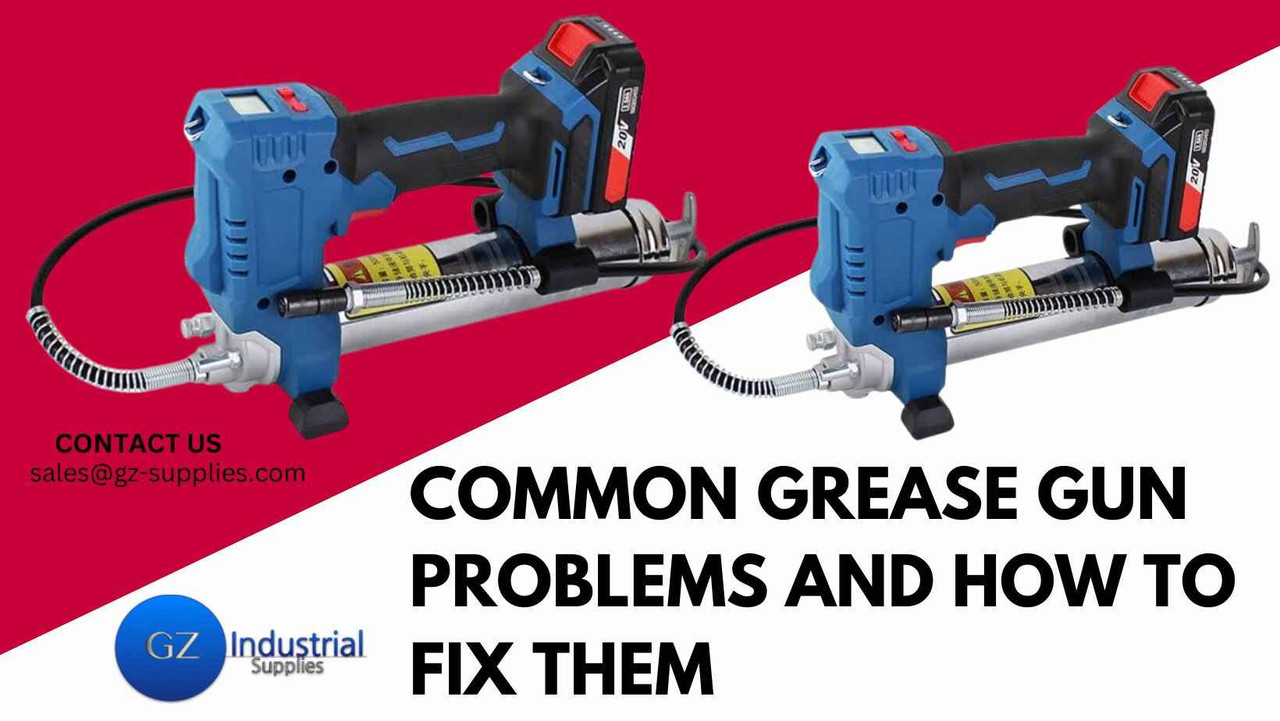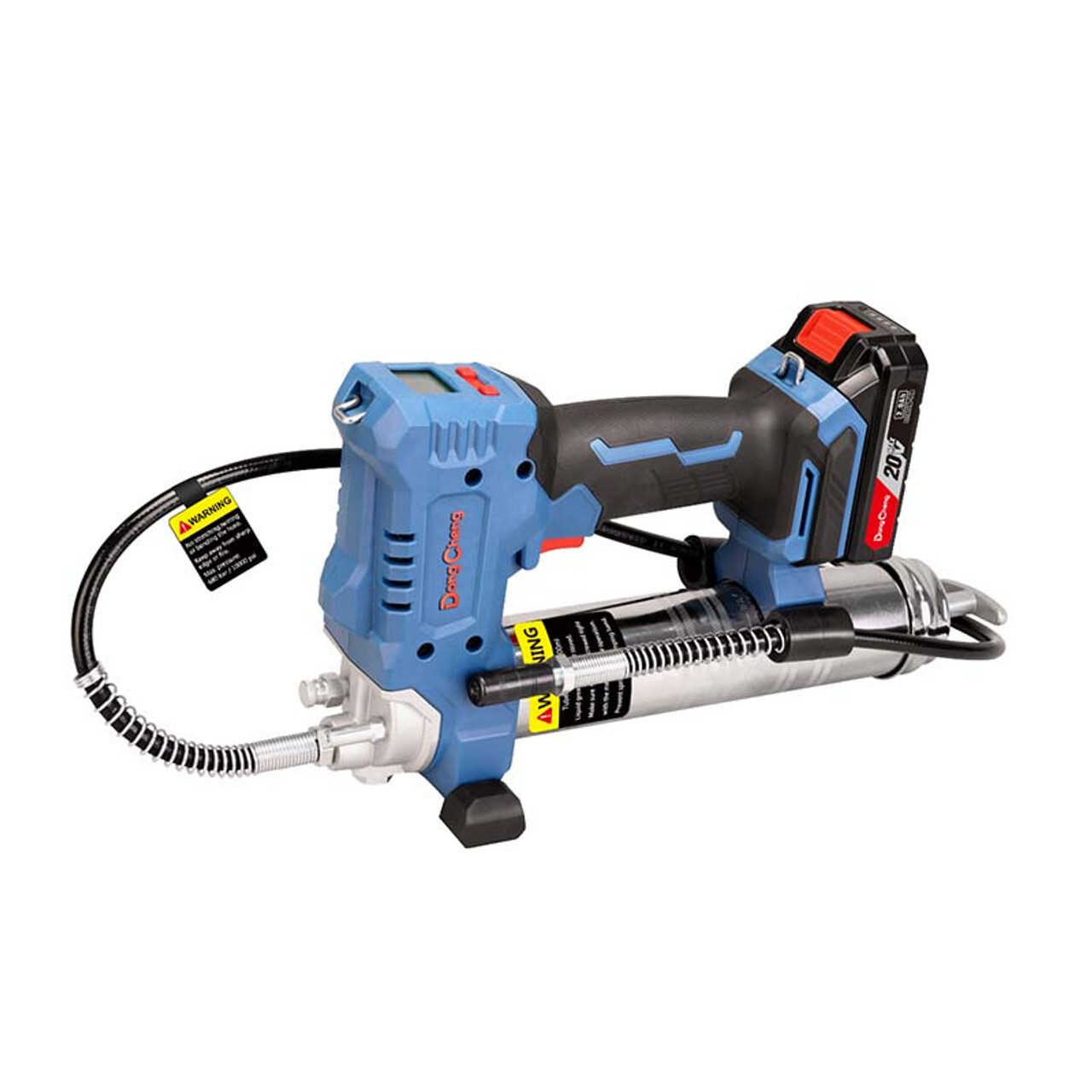Common Grease Gun Problems and How to Fix Them
Introduction
Grease guns are essential tools in machinery maintenance, helping ensure smooth operation and extended equipment life. But like all tools, they can malfunction often at the worst times. Whether you're using a manual, pneumatic, or battery-powered grease gun, understanding and solving common problems can save time, money, and frustration.
In this article, we’ll walk through some of the most frequent issues users encounter with grease guns and how to troubleshoot them effectively.
Read more...Grease Couplers: Types, Uses and How to Choose
Key Takeaway
- Airlocks are common and occur when air gets trapped, preventing grease flow; fix this by bleeding the gun through the valve or loosening the head slightly while pumping.
- Grease not dispensing could indicate an empty cartridge, clogged nozzle, or hardened grease; check the cartridge and clean or replace the nozzle as needed.
- Leaks around the grease gun are often caused by worn seals, loose fittings, or overpressure; resolve this by tightening components and replacing damaged seals.
- Lack of pressure build-up usually results from faulty plunger seals or internal leaks; inspect and replace seals if necessary.
Understanding How Grease Guns Work
Before diving into problems and solutions, it's helpful to understand how a grease gun functions. Grease guns work by delivering controlled amounts of lubricant through a nozzle to specific parts of machinery. The tool consists of a barrel (where the grease is stored), a plunger mechanism, a pump handle or trigger, and a nozzle or hose for application. Most problems arise from disruptions in pressure, clogs, or improper handling.
Grease Gun Not Dispensing Grease
Symptoms:
- No grease comes out when the trigger or handle is pressed.
- The grease gun feels unusually light or empty.
Causes:
- Empty grease cartridge.
- Blockage in the nozzle or hose.
- Improperly primed grease gun.
- Hardened grease buildup.
Solutions:
- Check and replace the grease cartridge if needed.
- Disassemble and clean the nozzle and hose.
- Prime the grease gun by pumping the handle or trigger repeatedly.
- Use a pin or needle to clean out hardened grease at the nozzle tip.
Air Pockets in the Grease Tube
Symptoms:
- The grease gun pumps, but only air comes out.
- Intermittent grease flow.
- Loss of pressure during use.
Causes:
- Improper cartridge installation allowing air in.
- Grease not packed tightly enough in the barrel.
- Incomplete priming after loading new grease.
Solutions:
- Bleed the air out using the air release valve (if available on your model).
- Manually prime the gun by pumping until grease begins to flow steadily.
- Tap or gently bang the barrel to settle grease and remove trapped air.
- Load cartridges carefully, ensuring no air is introduced between the grease and plunger.
Grease Leakage from the Fittings or Gun
Symptoms:
- Grease oozes around the coupler or nozzle.
- Grease leaks from joints or cracks in the gun.
Causes:
- Loose or worn coupler.
- Overpressure during use.
- Damaged seals or O-rings inside the grease gun.
Solutions:
- Tighten the coupler or replace it if worn out.
- Use the correct pressure setting, especially with pneumatic or battery-powered guns.
- Inspect and replace worn internal seals, O-rings, or hoses.
Symptoms:
- The coupler is hard to push onto or pull off the grease fitting.
- Fitting gets stuck, causing wasted time and effort.
- Risk of damaging the fitting during removal.
Causes:
- Coupler jaws are worn, misaligned, or stiff.
- Dried grease or debris around the fitting.
- Incorrect angle or approach when attaching the coupler.
Solutions:
- Clean both the grease fitting and the coupler regularly to prevent buildup.
- Apply a small amount of oil to the coupler jaws to maintain smooth action.
- Replace worn or stubborn couplers with locking-style couplers for easier removal.
- Ensure you're aligning the coupler straight onto the fitting for best engagement.
Inconsistent Grease Flow or Intermittent Operation
Symptoms:
- Grease only flows occasionally.
- Requires multiple pumps before any grease emerges.
- Gun works, then suddenly stops mid-task.
Causes:
- Blocked fittings or hardened grease.
- Faulty check valve or spring inside the gun.
- Partial airlocks or grease contamination.
Solutions:
- Detach the grease fitting and clean or replace it if blocked.
- Flush the gun using clean grease to remove contamination.
- Replace internal components like the check valve or spring if damaged.
- Keep grease stored in cool, dry areas to prevent hardening.
Grease Gun Won’t Build Pressure or Dispense Grease
Symptoms:
- Pump handle or trigger moves freely but no grease comes out.
- Grease gun feels "empty" even when loaded.
- No resistance or pressure buildup when pumping.
Causes:
- Airlock or trapped air in the grease chamber.
- Damaged plunger or seal.
- Incorrect loading technique.
Solutions:
- Bleed the air out: Use the bleeder valve (if available) or loosen the head slightly while pumping until grease begins to flow.
- Inspect and replace worn plungers or O-rings: A damaged seal won't create enough pressure.
- Reload the cartridge properly: Ensure you're using the correct method (manual, suction, or cartridge) and avoid introducing air pockets.
Frequently Asked Question
1. Why is grease not coming out of my grease gun?
This is often caused by an airlock, an empty cartridge, or a clogged nozzle. Try bleeding the air, checking the cartridge level, and cleaning or replacing the nozzle.
2. How do I fix an airlock in my grease gun?
Loosen the grease gun head slightly while pumping the handle or use the bleed valve (if available) to release trapped air until grease flows smoothly.
3. What should I do if my grease gun is leaking?
Inspect the seals, fittings, and cartridge. Tighten any loose components, replace damaged seals, and ensure the cartridge is properly seated.
4. Why does my grease gun lose pressure while in use?
This could be due to worn or faulty plunger seals, internal leaks, or air intrusion. Replace the seals and ensure the barrel is tightly secured.
5. How can I prevent common grease gun problems?
Regularly clean the nozzle, use high-quality compatible grease, store the gun upright, and avoid mixing grease types to maintain optimal performance.
Related Article:
Types of Grease to Use on a Grease Gun
How to Load a Grease Gun Without a Mess
Manual vs Pneumatic vs Battery-Powered Grease Guns: Which Is Best for You?
Conclusion
Understanding and resolving common grease gun problems is key to maintaining efficient and reliable machinery. From dealing with airlocks to fixing leaks and inconsistent grease flow, knowing how to troubleshoot your grease gun ensures less downtime, reduced waste, and longer tool life. Whether you're a professional technician or handling maintenance in-house, keeping your grease gun in optimal condition is a small effort that delivers big results.
For top-quality grease guns, cartridges, and maintenance tools, visit GZ Industrial Supplies—Nigeria’s trusted destination for industrial equipment and expert solutions. Don’t wait for problems to slow you down—equip yourself with the right tools today!









